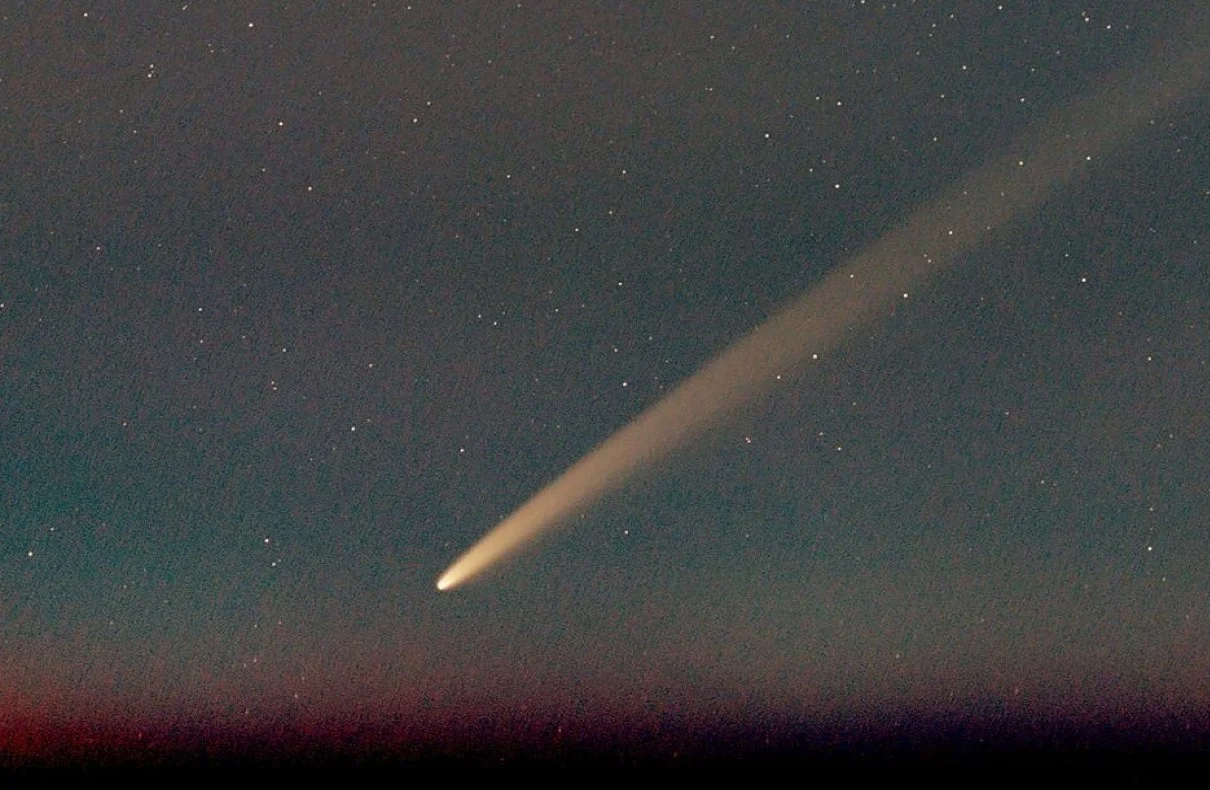This luminous cosmic object will enter its peak visibility phase in the sky starting this Saturday. And if anyone misses it, they will have to wait another 80,000 years.
This comet was identified last year by China’s Tsuchinshan-ATLAS observatory, hence its name. It made its closest transit of the Sun in late September.
“Scientists assumed it might have disintegrated during that pass [by the Sun], as its volatile, icy composition was unable to withstand the intense heat of our parent star, but it survived more or less intact ,” astronomer Bill Cooke explained in a NASA bulletin.
It will now pass close enough to Earth, at around 70 million kilometres, to be visible from 12 October onwards.
“So if you get a chance to see one, take a look, even if you have to use binoculars to make out the tail and its features. They are absolutely beautiful.”
Since late September, the comet’s progress has been visible from the southern hemisphere near the horizon line, so only very clear locations have been ideal.
But from the middle of this month, NASA said, the comet will be visible from clear spots in the northern hemisphere a little higher in the sky at twilight or early in the evening. During the day it will be barely visible, according to NASA.
Cooke recommends choosing a dark viewing spot just after dark. Looking southwest, about 10 degrees above the horizon , Tsuchinshan-ATLAS should be visible between the constellations Scorpius and Sagittarius .
In the second half of the month, the comet will move across the sky near the star Arcturus , which is one of the brightest in the night sky, and the planet Venus . There are cell phone apps that allow you to see the position of these constellations, stars and planets.
As in other similar cases, it is preferable to be in a place without light pollution to observe it. Sites such as Light Pollution Map allow you to identify where there is a greater chance of having a sky free of the lights of urban centres.
Under the best conditions, it may be visible to the naked eye. But it is better to have binoculars or a simple telescope .
Tsuchinshan-ATLAS will only be visible from Earth for the rest of October, as it will disappear next month and will not pass through the Solar System’s neighborhood again for 80,000 years.
Bright comets that are visible from Earth are actually few , hence why Tsuchinshan-ATLAS has been called the “comet of the century.”
Unlike asteroids, which are made up exclusively of rock, comets are composed of ice, rock, and gas .
As they approach the Sun, the heat causes their ice to transform into gases and release dust particles trapped in the ice , which is what causes their remarkable “tail.”
Shortly after it was spotted in January 2023, there was speculation that it might be one of the brightest comets in recent years. The hype has faded, but it still has good conditions to be visible.
Some photographers have captured stunning images of its glow using long exposure techniques.
According to NASA, in the past 300 years only nine comets have been bright enough to be seen during the day , the last being West in 1976 and Hale-Bopp in 1997.
“The brightness of comets is measured on the same scale we use for stars, a scale that has been used since about 150 BC, when it was devised by the ancient scholar Hipparchus and refined by the astronomer Ptolemy,” NASA explained.
On this logarithmic scale, the lower your log, the more likely the object is to be seen clearly, whether with a telescope or the naked eye.
Tsuchinshan-ATLAS is rated at magnitude 2 to 4. “By comparison, the brightest visible star in the night sky, Sirius, has a magnitude of -1.46. At its brightest, Venus’s solar reflection has a magnitude of -4. The International Space Station sometimes reaches a relative brightness of -6.”
Massey says caution is needed as to whether there might not be another one in the near future that can delight us with its beauty. “Is it going to be the brightest comet in the last 100 years? I highly doubt it . ”
Comet Neowise, which caused a sensation during the pandemic in 2020, had a brightness that perhaps cannot be surpassed by this month’s comet.
However, that’s no reason to let them pass you by: “Comets are unpredictable, but we don’t know when the next one will appear, so don’t miss this opportunity .”
